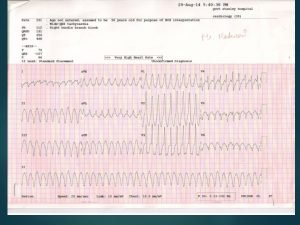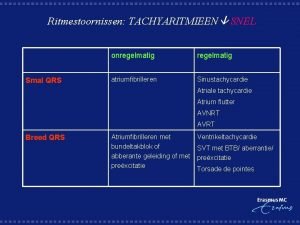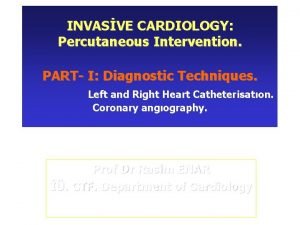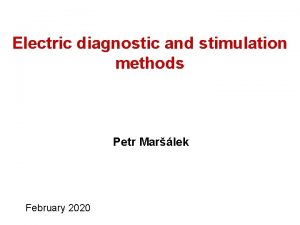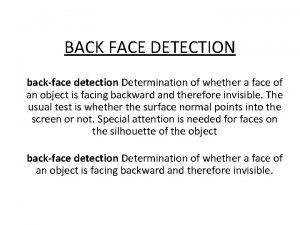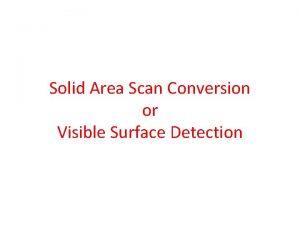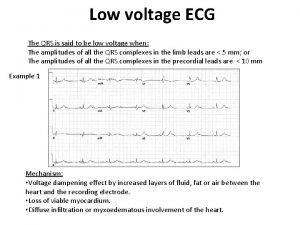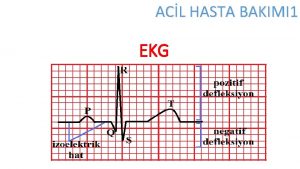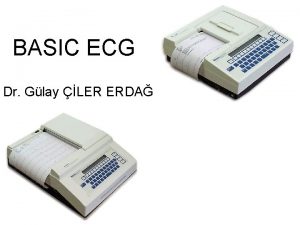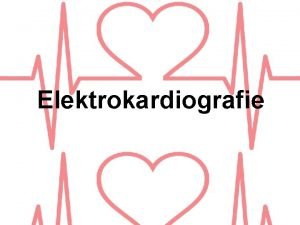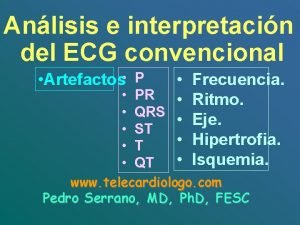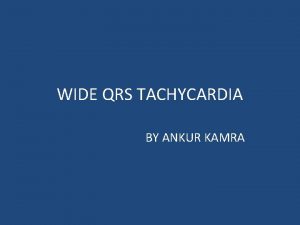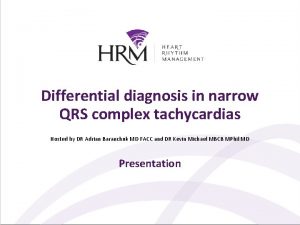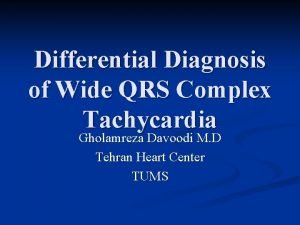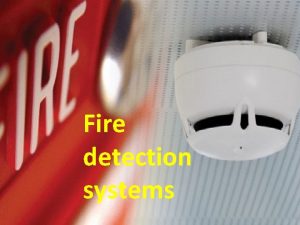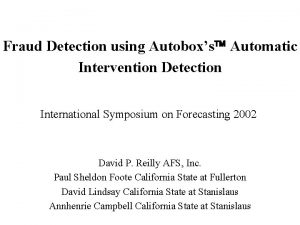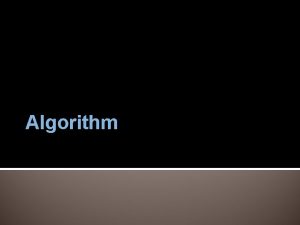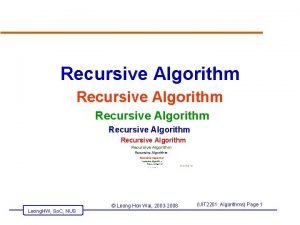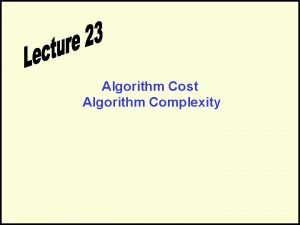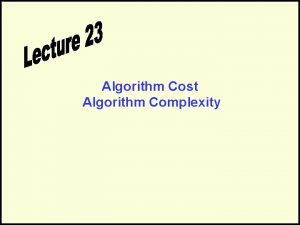Automatic QRS Complex Detection Algorithm Designed for a



















- Slides: 19

Automatic QRS Complex Detection Algorithm Designed for a Novel Wearable, Wireless Electrocardiogram Recording Device - Presented By Sagar Naik ( 1703005 ) Shraddha Pradhan ( 1703007 )

2 ❑ Introduction ❑ Methodology Contents ❑ Results ❑ Conclusion ❑ References

3 Introduction

4 ▸Ambulatory ECG monitoring are numerous. ▸DELTA has developed the e. Patch. Need ▸ECG channels on the sternum. ▸Do not correspond to any standard HOLTER leads.

5 ▸ECG analysis is a robust, reliable and automatic QRS detection algorithm. QRS Detection ▸Optimized for the special e. Patch ECG signals. ▸Several different approaches. ▸Automatic QRS detection ▸Noise ▸Computational Complexity

6 To overcome some of the limitations, the proposed QRS detection algorithm can be applied in two different modes: Single-channel and Multi-channel mode Single Channel & Multichannel Mode ▸Multi-channel mode. ▸Single-channel mode. ▸ QRS detection is generally based on channel I of the MIT -BIH Arrhythmia Database (MITDB)

7 Methodology

8 ▸Monitoring of 11 different patients. ▸Two ECG channels recording with a sampling frequency of 500 Hz and a resolution of 13 bits. Data ▸ 30 minutes were extracted, one hour after beginning of the recording. ▸ All beats annotated as “normal”.

9 The Electrode Placement Illustration of the DELTA ECG e. Patch platform and the electrode placements.

10 Automatic Schematic overview of the QRS complex detection algorithm QRS Complex Detection Algorithm ▸ The channel exclusion block marks the point of separation of the single-channel and multi-channel modes. ▸ High maximum removal, adaptive threshold calculation, and decision fusion blocks

11 ▸ Channel Exclusion Criteria. ▸Bandpass Filtering ▸Wavelet Transform Algorithm

12 ▸ Detection of QRS Candidates. ▸An adaptive threshold QRS Localization and Confirmation Block. ▸The location of the second zero-crossing is applied if more than one zero-crossing occurred in the bandpass filtered signal during this time interval.

13 Results

14 ▸ Beat detection accuracy ▸gross and the average statistics. ▸Using only channel I, only channel II (single-channel modes) and both channels (multi-channel mode).

15 Conclusion

16 ▸Achieves good performance. ▸Improved by implementation of more sophisticated channel exclusion criteria. ▸High detection sensitivity to abnormal beats.

17 References

18 ▸ F. Chiarugi, V. Sakkalis, D. Emmanouilidou, T. Krontiris, M. Varanini, and I. Tollis, Adaptive threshold QRS detector with best channel selection based on a noise rating system, Comput. Cardiol. , pp. 157160, 2007 ▸ H. Boqiang and W. Yuanyuan, Detecting QRS complexes of two -channel ECG signals by using combined wavelet entropy, 3 rd Inter-national Conference on Bioinformatics and Biomedical Engineering, vols. 1 -11, pp. 24392442, 2009.

19 THANKS!
 Josephson sign
Josephson sign Smal qrs
Smal qrs Narrow qrs complex
Narrow qrs complex Neuron
Neuron Narrow qrs complex
Narrow qrs complex Edge chasing algorithm
Edge chasing algorithm Back detection
Back detection Solid area scan conversion
Solid area scan conversion Cmh algorithm for deadlock detection
Cmh algorithm for deadlock detection Normal p wave
Normal p wave Low voltage qrs
Low voltage qrs No p wave on ecg
No p wave on ecg Elektromekanik disosiasyon
Elektromekanik disosiasyon Abcd efg hijk lmnop q
Abcd efg hijk lmnop q Smalle qrs-komplekser
Smalle qrs-komplekser Qrs komplex
Qrs komplex Onda q ecg
Onda q ecg Elektrokardiografia
Elektrokardiografia Qrs axis calculator
Qrs axis calculator Hemibloqueo anterior izquierdo
Hemibloqueo anterior izquierdo
